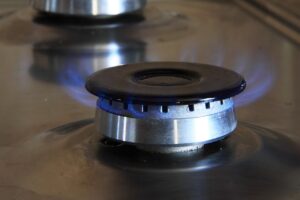Dishwashers are a convenient and time-saving appliance in any kitchen. However, like any other appliance, they can experience issues and breakdowns over time. While it may be tempting to immediately call a professional for repairs, there are many benefits to attempting DIY dishwasher repair. Not only can it save you money, but it can also give you a sense of accomplishment and empower you to take care of your own appliances.
Before diving into DIY dishwasher repair, it is important to prioritize safety precautions. Dishwashers are connected to electrical and plumbing systems, so it is crucial to turn off the power and water supply before attempting any repairs. Additionally, wearing protective gloves and eyewear can help prevent injuries while working with sharp tools or handling broken parts.
Tools and Equipment Needed for DIY Dishwasher Repair
To successfully repair your dishwasher, you will need a few essential tools and equipment. These include a screwdriver set, pliers, an adjustable wrench, a multimeter, a flashlight, and a bucket or towel for water cleanup. It is important to invest in quality tools that will last and provide accurate measurements. Cheap tools may break easily or give inaccurate readings, which can hinder your repair efforts. Additionally, having a user manual specific to your dishwasher model can be incredibly helpful for troubleshooting common issues. You might also consider incorporating essential dishwasher troubleshooting tools such as a drain snake for clearing blockages and a torque wrench for precision fastening. By equipping yourself with these resources, you will enhance your ability to diagnose and resolve problems effectively.
When purchasing tools, consider the specific needs of your dishwasher model. Different brands and models may require different types of screwdrivers or wrenches. It is also helpful to have spare parts on hand, such as replacement hoses or gaskets, in case you need to replace them during the repair process.
How to Troubleshoot Common Dishwasher Issues
Dishwashers can experience a variety of common issues that may require troubleshooting. Some of these issues include a dishwasher not starting, not filling with water, not draining properly, or not cleaning dishes effectively. By understanding the common causes of these problems, you can effectively troubleshoot and identify the issue.
For example, if your dishwasher is not starting, it may be due to a faulty door latch or a problem with the control panel. Checking the door latch for any obstructions or damage and ensuring that it is properly aligned can help resolve this issue. If your dishwasher is not filling with water, it may be due to a clogged water inlet valve or a malfunctioning float switch. Cleaning the water inlet valve and checking the float switch for any debris can help resolve this issue.
By following a step-by-step guide for troubleshooting and identifying the issue, you can save time and money by pinpointing the problem before attempting any repairs.
Steps for Cleaning a Dishwasher
Regularly cleaning your dishwasher is essential for maintaining its performance and prolonging its lifespan. Over time, food particles, soap scum, and mineral deposits can build up inside the dishwasher, leading to unpleasant odors and reduced efficiency. By following a step-by-step guide for cleaning the interior and exterior of your dishwasher, you can ensure that it continues to work effectively.
To clean the interior of your dishwasher, start by removing any large food particles from the bottom of the dishwasher. Then, place a cup of white vinegar in a dishwasher-safe container on the top rack and run a hot water cycle. This will help remove any built-up residue and eliminate odors. Afterward, sprinkle baking soda on the bottom of the dishwasher and run another hot water cycle to further clean and deodorize.
To clean the exterior of your dishwasher, wipe down the control panel, door, and sides with a mixture of warm water and mild dish soap. Avoid using abrasive cleaners or scrub brushes that could damage the surface. Additionally, regularly cleaning the filter and spray arms can help prevent clogs and ensure that water is distributed evenly during each cycle.
How to Replace a Dishwasher Pump
The dishwasher pump is responsible for circulating water throughout the appliance during each cycle. If you notice that your dishwasher is not cleaning dishes effectively or is making unusual noises, it may be a sign of a faulty pump. Replacing the dishwasher pump can be a more complex repair, but with the right tools and instructions, it can be done successfully.
To replace a dishwasher pump, start by disconnecting the power and water supply to the appliance. Then, remove the lower access panel to gain access to the pump. Disconnect the wires and hoses connected to the pump, taking note of their positions for reassembly. Remove any mounting screws or brackets holding the pump in place and carefully remove the old pump.
Install the new pump by reversing the steps taken to remove the old one. Connect the wires and hoses to their respective positions, ensuring a secure and tight fit. Once everything is properly connected, replace the lower access panel and restore power and water supply to the dishwasher. Test the dishwasher to ensure that the new pump is working correctly.
Fixing Dishwasher Leaks: A Step-by-Step Guide
Dishwasher leaks can be a common problem that can cause water damage to your kitchen floor or cabinets if not addressed promptly. There are several potential causes of dishwasher leaks, including a faulty door gasket, a cracked hose, or a damaged water inlet valve. By following a step-by-step guide for fixing dishwasher leaks, you can identify and resolve the issue.
To fix a dishwasher leak, start by inspecting the door gasket for any signs of wear or damage. If you notice any cracks or tears in the gasket, it will need to be replaced. Remove the old gasket by pulling it out of its groove and clean any residue or debris from the area. Install the new gasket by pushing it into place along the edge of the door.
If the leak persists after replacing the door gasket, check for any cracked or damaged hoses connected to the dishwasher. Replace any faulty hoses with new ones, ensuring a secure and tight fit. Additionally, inspect the water inlet valve for any cracks or damage. If necessary, replace the water inlet valve to prevent further leaks.
Replacing a Dishwasher Heating Element
The dishwasher heating element is responsible for heating the water during each cycle to ensure effective cleaning and sanitization. If you notice that your dishwasher is not heating properly or the dishes are not drying completely, it may be a sign of a faulty heating element. Replacing the dishwasher heating element can be a more advanced repair, but with the right tools and instructions, it can be done successfully.
To replace a dishwasher heating element, start by disconnecting the power and water supply to the appliance. Remove the lower access panel to gain access to the heating element. Disconnect the wires connected to the heating element, taking note of their positions for reassembly. Remove any mounting screws or brackets holding the heating element in place and carefully remove the old element.
Install the new heating element by reversing the steps taken to remove the old one. Connect the wires to their respective positions, ensuring a secure and tight fit. Once everything is properly connected, replace the lower access panel and restore power and water supply to the dishwasher. Test the dishwasher to ensure that the new heating element is working correctly.
Repairing a Faulty Dishwasher Spray Arm
The dishwasher spray arm is responsible for distributing water throughout the appliance during each cycle. If you notice that your dishwasher is not cleaning dishes effectively or there are areas with no water coverage, it may be a sign of a faulty spray arm. Repairing a faulty dishwasher spray arm can be a relatively simple repair that can greatly improve your dishwasher’s performance.
To repair a faulty dishwasher spray arm, start by removing it from its mounting bracket or hub. Inspect the spray arm for any clogs or debris that may be obstructing water flow. Clean any residue or debris from the spray arm using a toothbrush or small brush. If the spray arm is damaged or cracked, it will need to be replaced with a new one.
Install the new or cleaned spray arm by aligning it with the mounting bracket or hub and securing it in place. Ensure that it spins freely and does not hit any other parts of the dishwasher during operation. Test the dishwasher to ensure that the spray arm is distributing water evenly and effectively.
How to Fix a Dishwasher That Won’t Drain
A dishwasher that won’t drain can be a frustrating problem that can leave standing water in the appliance and prevent it from functioning properly. There are several potential causes of dishwasher drainage issues, including a clogged drain hose, a faulty drain pump, or a blocked air gap. By following a step-by-step guide for fixing a dishwasher that won’t drain, you can identify and resolve the issue.
To fix a dishwasher that won’t drain, start by checking the drain hose for any clogs or kinks. Remove the hose from the dishwasher and inspect it for any debris or obstructions. Clean out any clogs using a long brush or pipe cleaner and ensure that the hose is free of kinks when reattaching it.
If the drain hose is clear and the dishwasher still won’t drain, check the drain pump for any blockages or damage. Remove any debris or obstructions from the pump using needle-nose pliers or tweezers. If necessary, replace the drain pump with a new one to ensure proper drainage.
Additionally, check the air gap, if your dishwasher has one, for any clogs or blockages. Remove any debris from the air gap using a small brush or toothpick. Test the dishwasher to ensure that it is draining properly after performing these steps.
Preventative Maintenance Tips for Your Dishwasher
Regular maintenance is key to keeping your dishwasher running smoothly and efficiently. By following a few preventative maintenance tips, you can extend the lifespan of your dishwasher and prevent costly repairs.
First, always scrape off excess food from dishes before loading them into the dishwasher. This will help prevent clogs and ensure that the dishwasher can effectively clean the dishes. Additionally, regularly clean the filter and spray arms to prevent any buildup of debris or mineral deposits.
It is also important to periodically check the door gasket for any signs of wear or damage. If you notice any cracks or tears, replace the gasket to prevent leaks. Similarly, inspect the hoses connected to the dishwasher for any cracks or damage. Replace any faulty hoses to prevent leaks or water damage.
Finally, consider using a dishwasher cleaner or running a cycle with vinegar and baking soda once a month to remove any built-up residue and eliminate odors. This will help maintain the performance and efficiency of your dishwasher.
Conclusion:
DIY dishwasher repair can be a cost-effective and empowering way to take care of your appliance. By following the steps outlined in this article, you can troubleshoot common issues, clean your dishwasher, and even replace faulty parts. Remember to prioritize safety precautions and invest in quality tools for successful repairs. Regular maintenance and cleaning can also help prolong the lifespan of your dishwasher and prevent future issues. Before calling a professional, consider trying DIY repairs first – you may be surprised at what you can accomplish!
If you’re looking for tips on how to repair your dishwasher, you might also be interested in our article on “The Importance of Warranties for Appliance Repairs.” Warranties can provide peace of mind and financial protection when it comes to repairing your dishwasher or any other household appliance. To learn more about warranties and how they can benefit you, check out our article.
Can I Use the DIY Dishwasher Repair Guide for My LG Dishwasher?
Yes, you can definitely use a reliable LG dishwasher repair guide for DIY repairs. It’s important to make sure that the guide specifically targets your model to ensure you are following the correct steps. With the right guide and some mechanical skills, you can save money and time on repairs. Additionally, if you find that DIY repairs require more expertise than you possess, there are many affordable LG dishwasher repair options available in your area. These services often provide quick and effective solutions that can get your dishwasher back to working condition without breaking the bank. Remember to check reviews and ratings to choose a technician who offers quality service.
FAQs
What are the common problems that a dishwasher can encounter?
Some common problems that a dishwasher can encounter include clogged spray arms, malfunctioning heating elements, broken door latches, and faulty motors. Proper maintenance can help prevent these issues, ensuring your dishwasher operates efficiently. For those looking to understand how to troubleshoot these problems, a guide detailing dishwasher components explained can be incredibly helpful. By familiarizing oneself with these parts, users can identify and address issues before they escalate. Regular maintenance can help prevent these issues from arising. For those facing difficulties, there are several dishwasher troubleshooting tips available online that can guide users through basic repairs and maintenance tasks. Identifying and addressing minor problems early can extend the life of the appliance and improve its efficiency.
How can I troubleshoot my dishwasher?
You can troubleshoot your dishwasher by checking for any visible signs of damage or wear and tear, cleaning the spray arms and filters, and running a diagnostic cycle.
What tools do I need to repair my dishwasher?
The tools you need to repair your dishwasher may vary depending on the specific problem, but some common tools include a screwdriver, pliers, a multimeter, and a wrench.
Can I repair my dishwasher myself?
Yes, you can repair your dishwasher yourself if you have the necessary tools and knowledge. However, if you are not comfortable with DIY repairs, it is best to hire a professional.
How much does it cost to repair a dishwasher?
The cost of repairing a dishwasher can vary depending on the specific problem and the cost of replacement parts. On average, dishwasher repairs can cost anywhere from $100 to $500.
When should I replace my dishwasher instead of repairing it?
You should consider replacing your dishwasher instead of repairing it if it is more than 10 years old, if it requires frequent repairs, or if the cost of repairs exceeds the cost of a new dishwasher.



